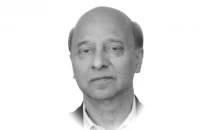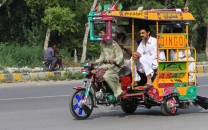Adjustment with an inhuman face
In this inflationary environment, development expenditure in 14 out of the 17 poorly defined pro-poor sectors declined

Education is the largest sector in pro-poor expenditures. After the declaration as a fundamental right under the Eighteenth Amendment to the Constitution, one would have expected the highest increase in primary and secondary education. However, it was reserved for professional and technical universities and colleges. Expenditure on teacher and vocational training actually declined. In the largest province of Punjab, the highest expenditure increase was experienced in university and college education. Balochistan, never failing to be the odd province out, showed the highest expenditure growth in the unexplained category of ‘others’. In health, general hospitals and clinics, the so-called tertiary subsector, not only claims the largest share, but this share has increased during the period under study, from 74.5 per cent to 75.8 per cent. The crucial mother and child health witnessed a serious expenditure cut. Both Punjab and Sindh allowed accelerated funding to tertiary health, while Balochistan and Khyber-Pakhtunkhwa emphasised primary and preventive health. With the devolution of health and education under the 18th Amendment, federal spending is likely to reduce when the full year data is taken into account.
Rising poverty, aggravated by the increasing number of the working poor, requires a system of direct cash transfers to provide immediate succour to those unable to make ends meet. Budgetary schemes include the Benazir Income Support Programme (BISP), the Pakistan Bait-ul-Mal and social security and social welfare. On the other hand, zakat, the Employees’ Old-Age Benefits Institution, the Workers Welfare Fund and microfinance are the main non-budgetary instruments. The BISP is the largest of all, with a share of 83 per cent. In July-December 2010, Rs26.2 billion were disbursed compared to Rs11.8 billion in July-December 2009. What is intriguing is that while the amount disbursed more than doubled, the number of beneficiaries has declined from 4.42 million to 3.74 million. The Mid-year Progress Report for 2010/11 issued by the ministry of finance gives no explanation. All schemes together cover no more than 5.5 million beneficiaries. It is, therefore, important to keep the largest scheme transparent.
Published in The Express Tribune, September 3rd, 2011.














COMMENTS
Comments are moderated and generally will be posted if they are on-topic and not abusive.
For more information, please see our Comments FAQ